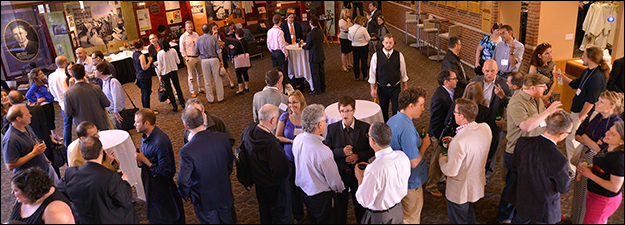Leadership Profiles in the Tenth- and Eleventh-Century Church
Sponsoring Organization(s)
Conventus: Problems of Religious Communal Life in the Central Middle Ages
Organizer Name
Steven Vanderputten
Organizer Affiliation
Univ. Gent
Presider Name
Steven Vanderputten
Paper Title 1
Leading by Example: Customaries and Abbatial Conversatio at Cluny in the Eleventh Century
Presenter 1 Name
Edmund McCaffray
Presenter 1 Affiliation
Arizona State Univ.
Paper Title 2
In the Teeth of Reform: Reprofiling the Catalan Episcopate around the Year 1000
Presenter 2 Name
Jonathan Jarrett
Presenter 2 Affiliation
Univ. of Birmingham
Paper Title 3
Imitatio or Aemulatio? Developing New Forms of Episcopal Leadership in Eleventh-Century Lotharingian Contexts
Presenter 3 Name
Pieter Byttebier
Presenter 3 Affiliation
Univ. Gent
Start Date
14-5-2015 1:30 PM
Session Location
Bernhard 159
Description
This session aims to investigate the shaping of ecclesiastical and religious leadership profiles in the high Middle Ages. Expectations regarding the behavior and morality of abbots and bishops in particular were subject to continuous evolution, a process brought about by the confrontation of early medieval leadership models to new societal, intellectual, and religious impulses. Papers will address two key questions. First, how this process contributed to the emergence of new, broadly acknowledged profiles for the religious and ecclesiastical leadership, and how these can be identified through study of the primary evidence. And second, how religious and ecclesiastical leaders responded to these new profiles, and how these impacted on their perception of self, public behavior, and ongoing developments in leadership ideology.
Steven Vanderputten
Leadership Profiles in the Tenth- and Eleventh-Century Church
Bernhard 159
This session aims to investigate the shaping of ecclesiastical and religious leadership profiles in the high Middle Ages. Expectations regarding the behavior and morality of abbots and bishops in particular were subject to continuous evolution, a process brought about by the confrontation of early medieval leadership models to new societal, intellectual, and religious impulses. Papers will address two key questions. First, how this process contributed to the emergence of new, broadly acknowledged profiles for the religious and ecclesiastical leadership, and how these can be identified through study of the primary evidence. And second, how religious and ecclesiastical leaders responded to these new profiles, and how these impacted on their perception of self, public behavior, and ongoing developments in leadership ideology.
Steven Vanderputten


